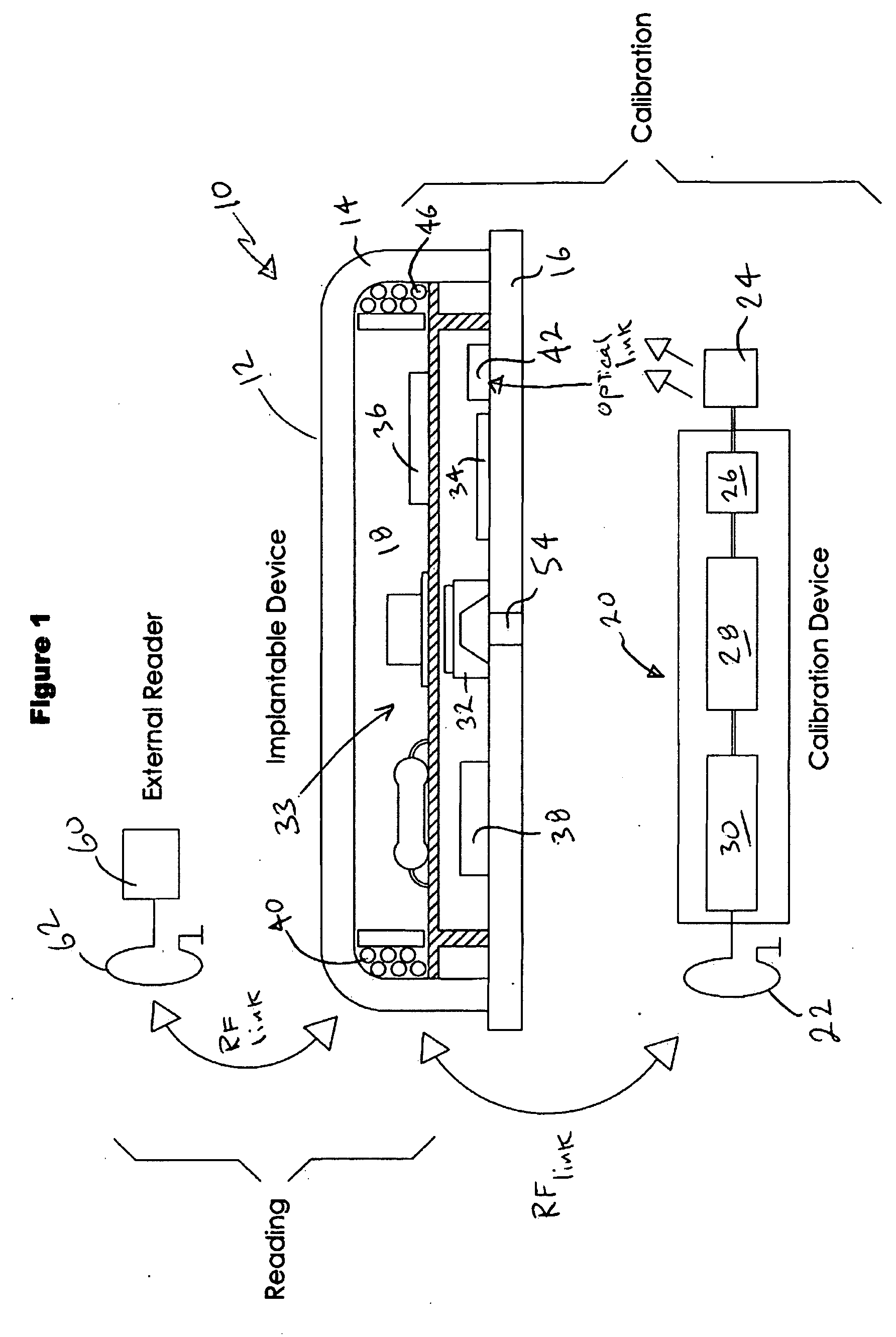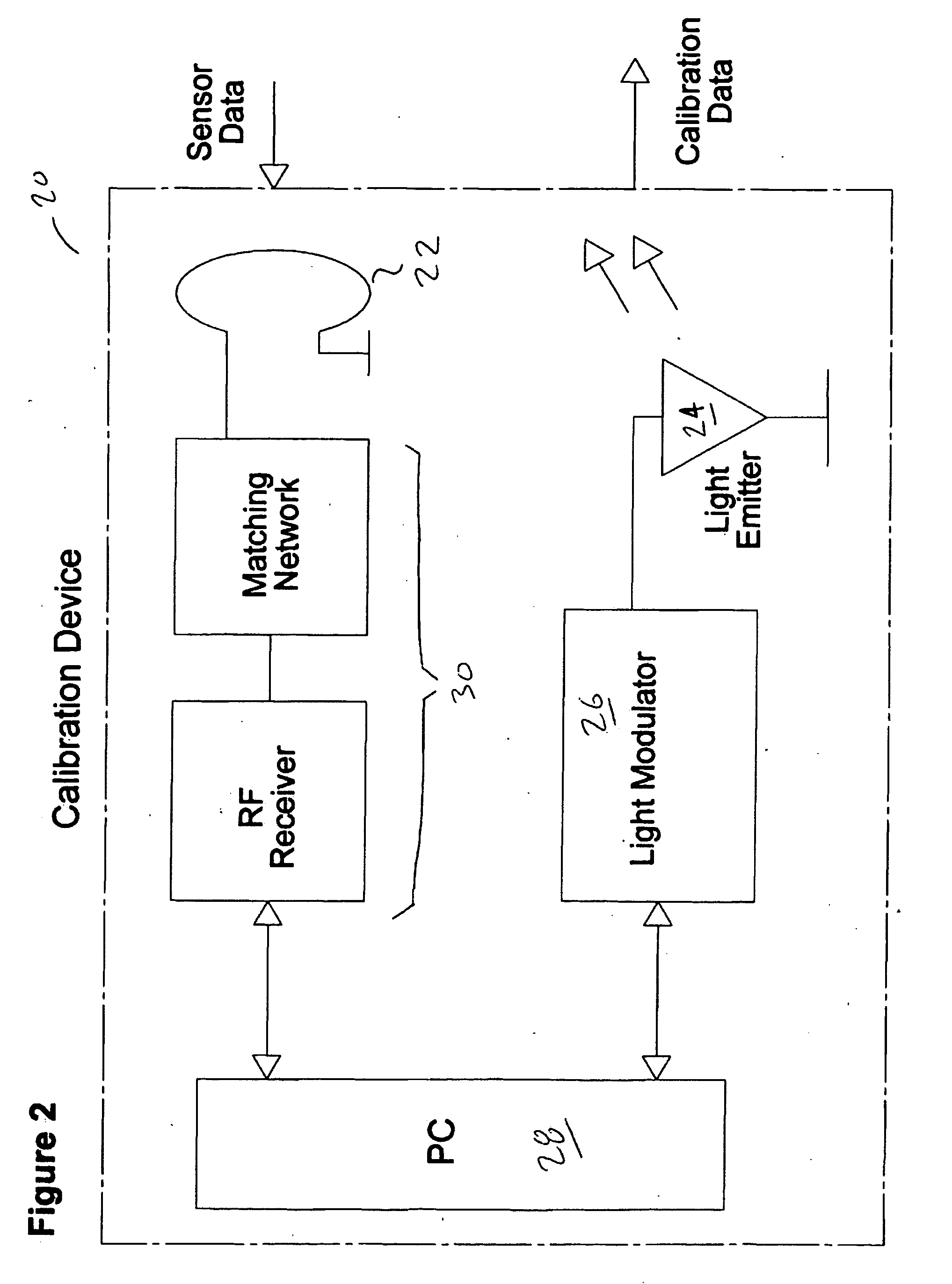Method for the calibration of an implantable sensor
- Summary
- Abstract
- Description
- Claims
- Application Information
AI Technical Summary
Benefits of technology
Problems solved by technology
Method used
Image
Examples
example 1
[0032]A pressure sensor is being calibrated in a pressure chamber. Known pressures and temperatures are applied to the chamber while the output signal of the sensor is read at different pressure values. The output signal of the sensor and the known pressure and temperature values within the chamber are compared at different pressures and the difference between the two values if any is noted.
[0033]As illustrated in the table below, during the calibration process of a specific sensor, it is determined that the sensor outputs a pressure value of 0.4 PSI when the known pressure is 0.5 PSI. And at a known pressure value of 0.54 PSI, the sensor's reading is just 0.5 PSI. At 0.6 PSI from the sensor, the known pressure value within the chamber is 0.58 PSI. From these three simple data points, a corrective coefficient data set can be generated for this particular sensor so that after the sensor is operational within any environment, a reading from the sensor of 0.4 PSI, for example will auto...
PUM
 Login to View More
Login to View More Abstract
Description
Claims
Application Information
 Login to View More
Login to View More - R&D
- Intellectual Property
- Life Sciences
- Materials
- Tech Scout
- Unparalleled Data Quality
- Higher Quality Content
- 60% Fewer Hallucinations
Browse by: Latest US Patents, China's latest patents, Technical Efficacy Thesaurus, Application Domain, Technology Topic, Popular Technical Reports.
© 2025 PatSnap. All rights reserved.Legal|Privacy policy|Modern Slavery Act Transparency Statement|Sitemap|About US| Contact US: help@patsnap.com



